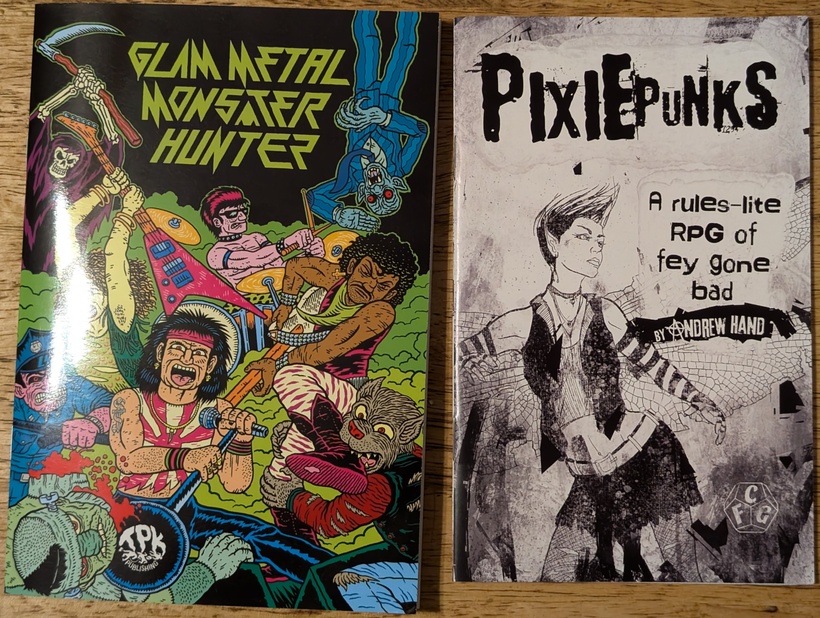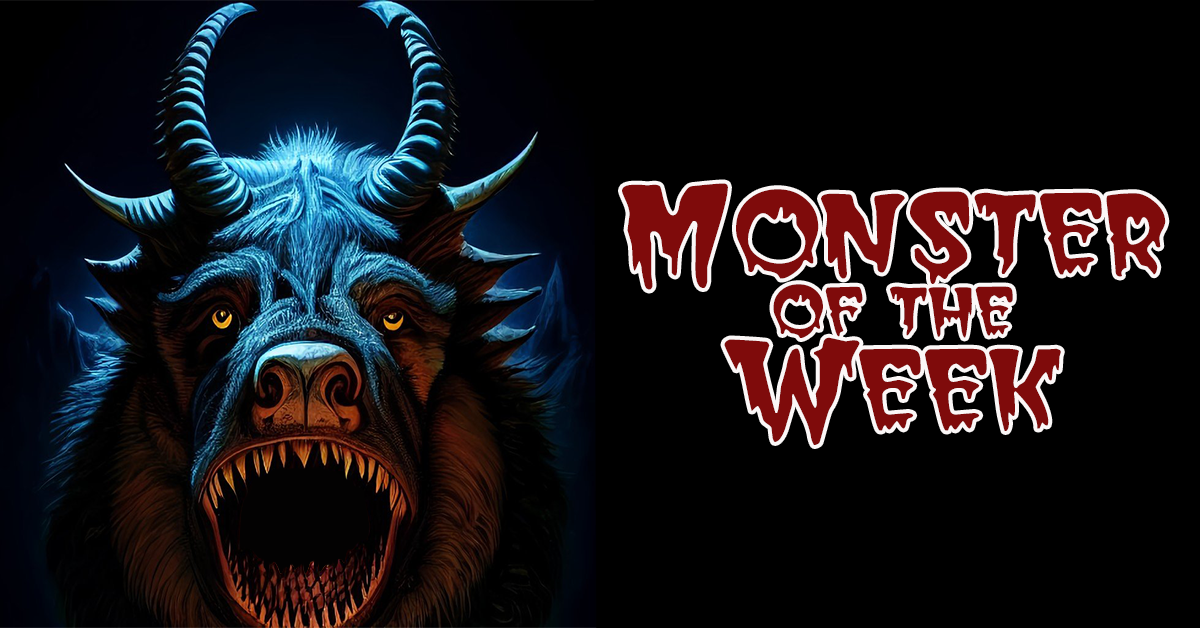We may earn money or products from the companies mentioned in this post.
I’ve been trying to read at least some of the shorter zines I’ve collected over the years. Recently I read Glam Metal Monster Hunters and Pixie Punks on the same night, and it seemed like a good idea to review them together since they kind of have opposite approaches to zine design.

Let’s start with Glam Metal Monster Hunters. It’s pretty much just what it tells you on the cover. You play members of a hair band who fight monsters. While I’m personally really fond of the sort of 90s indie comic art style of the cover, I understand that it doesn’t appeal to everyone. Inside, the book is pretty basic when it comes to design. There are maybe 4 pieces of art and some tables and boxes and things, but it’s largely text.

While Glam Metal Monster Hunters is not the prettiest zine I’ve ever seen, it does have a characteristic that many zines (especially those in the 30-pages-or-less category) are missing: It’s a complete game. The system is basic, but everything you need to play is there. There are even rules like Deals with the Devil (which of course give you the Mark of the Beast) that fit the game thematically. A few of these (like trying to call rolling the dice “Taking Care of Business”) fall flat, the ones that work generally work pretty well. After reading through the zine, I feel like I could run a game of Glam Metal Monster Hunters. I’ll give it a rating of 600/666.
Next up is Pixie Punks, which has considerably better graphic design and more broadly appealing art (which was the deciding factor in my funding the zine). It’s also got a lot of art, with multiple illustrations on several pages and only a few spreads without any pictures.

There’s just one problem: The game part of the zine is, at best, half-finished. They tell us that characters have three skills and what they mean. The skills aren’t really rated, but one succeeds on a roll of 4 or higher (on a d12), one on 7+, and the last on 12+. So at least we know how those work. The book then goes on to describe 3 more skills, but doesn’t tell you how to determine their ratings. Later in the book there’s a mention of GMs giving points in these stats out as rewards, but I kind of suspect that characters have at least Health points before they complete their first adventure. It also mentions three categories of abilities (Opposed, Reactive, and Passive), which the game does not seem to use.
Next the book lists what look like classes (like the Enchanter and Goblin in the picture above), but it’s unclear whether there’s any mechanical difference between them. You just get a name, a picture, and one sentence. I’m not even sure they tell you that you should pick one as part of character creation. I briefly wondered if this section was the least detailed monster manual ever, but a handful monsters with stats later in the book suggests that this is not the case.
Then there’s the monster section (the most complete portion of the book) a page on crafting that tells us how some abilities (a thing characters in this game do not have) allow PCs to make potions and tech and stuff. The remainder of the book contains rules for equipment, combat, and player rewards that for the most part are just as well thought-out as the rest of the system (ie., not very).
You might think that they make up for the weak system design with a great game setting. You’d be wrong. Except for the details of particular creature types and items (which usually max out at two sentences of detail) the extent of the game set up is: (1) Fairy has two sides like a coin (Seelie and Unseelie). (2) The Seelie were recently decimated by outsiders in hazmat suits (it’s up to the GM to determine exactly who they are, presumably because it seemed like figuring out that kind of thing that might be difficult or time-consuming). (3) The outsiders are now starting to show up on the Unseelie side (where the PCs live).
Overall, not only is the game unplayable, it’s pretty clear that he designer (and I use that term extremely loosely) couldn’t even be bothered to re-read the text after writing it to make sure there weren’t multiple sections that serve no purpose within the rules as presented. The art gets 4/5 Yum Yums. The game design and writing gets 0/5.




